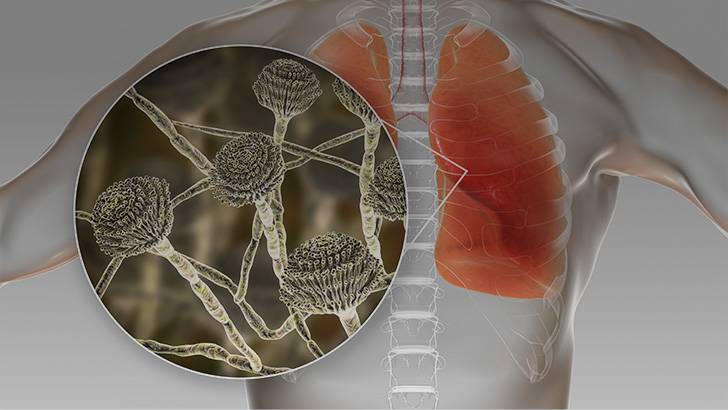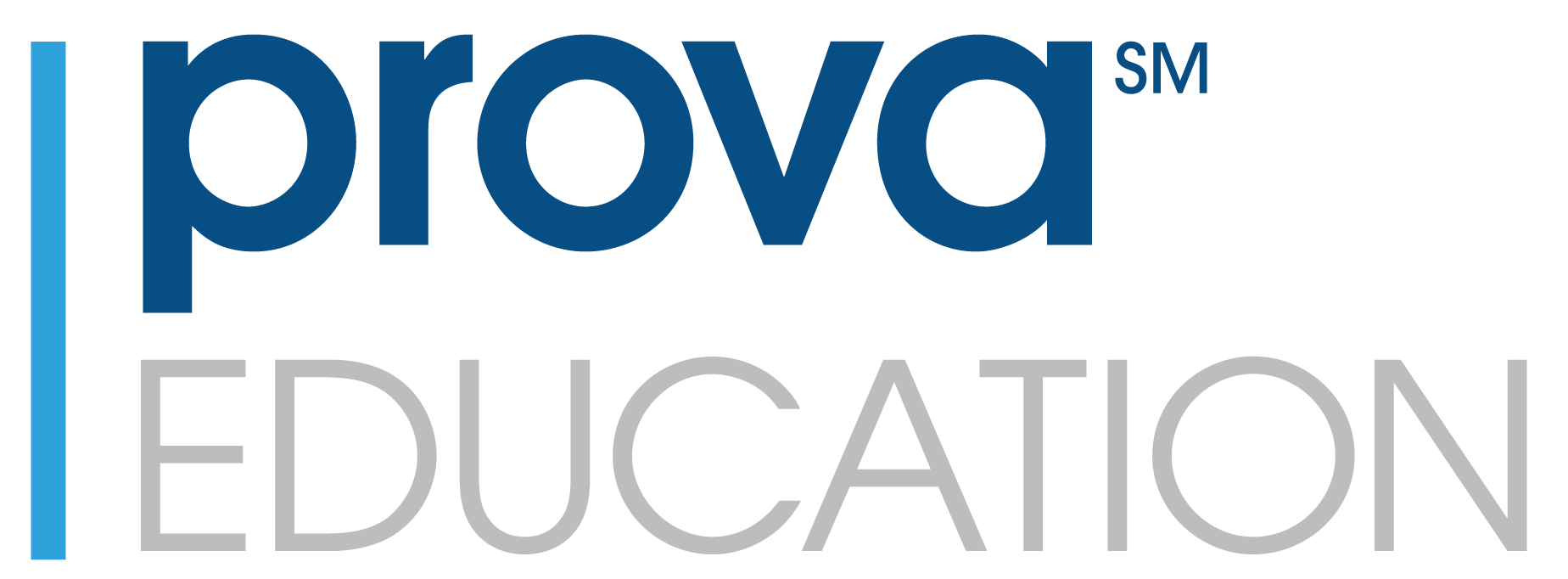Announcer:
Welcome to CME on ReachMD. This activity, entitled “Invasive Fungal Infections: More Common Than You Think” is provided by Prova Education.
Prior to beginning the activity, please be sure to review the faculty and commercial support disclosure statements as well as the learning objectives.
Dr. Pappas:
Did you know that many of your patients are quite susceptible to invasive fungal infections? In fact, anyone undergoing immunotherapy, transplantation, or even receiving any sort of advanced immunosuppressive therapy, including some of the more modern biologics for any number of reasons, is considered at high risk.
This is CME on ReachMD, and we’re here to unpack all of that for you in a clinically meaningful way.
I’m Dr. Peter G. Pappas, and I’m a Professor of Medicine at the University of Alabama in Birmingham in the Division of Infectious Diseases and involved in the Mycoses Study Group as Chair of the Scientific Committee.
Dr. Patterson:
And I’m Dr. Tom Patterson, a Professor of Medicine and Chief of Infectious Diseases at UT Health San Antonio.
Dr. Pappas:
Well, first, let’s get on the same page about what we mean when we use the terms invasive fungal infections or disease, or invasive mold infection or disease. In other words, are all fungi created equal?
Dr. Patterson:
They’re not. We do see invasive fungal infections from both yeast and for molds. For the yeast infections, Candida species, particularly Candida albicans, remains the most common in most areas of the world, but we see resistant yeast in a number of settings. We see Candida glabrata causing resistant infections and we also see other newer species, like the superbug Candida auris that can be multiply drug resistant. Cryptococcus also, but we see less resistance in that. But I think it’s the molds that we’re particularly worried about. The rare molds have increasingly been detected in these high-risk patients. Unusual species like Scedosporium and Lomentospora are often resistant to our whole armamentarium that we’ve had previously to deal with fungal infections.
Dr. Pappas:
I agree, and I think I would add to that yeast infections, especially Candida infections, impact a larger group of patients, potentially, because you’re dealing with ICU patients who may not be otherwise immunocompromised but are also quite susceptible to the mold infections – individuals who are iatrogenically immunosuppressed, something that we’ve done to lower their immune repertoire to make them more susceptible to these invasive molds.
Dr. Patterson:
I agree. Invasive fungal infections and disease are more common than ever before. What’s really going on? Let’s talk first about opportunistic fungal pathogens. Have we become the victims of our own success?
Dr. Pappas:
Well, Tom, I think that’s absolutely the case. I think that many of these opportunistic fungal infections, especially the mold infections, are diseases of medical progress. So absolutely, with the increased use of these immunosuppressive agents, including the biologics, more advanced chemotherapy, steroids in a variety of patients, you really have opened up a large population of patients who are vulnerable now to these infections. And you couple that with some of the multidrug-resistant or single-drug-resistant fungal pathogens, and it really creates a major challenge for clinicians everywhere dealing with these types of patients. Not only do we have azole-resistant Candida but also azole- and echinocandin-resistant Candida glabrata, Candida auris, which you mentioned earlier. We have azole-resistant Aspergilli, which are quite dominant in Europe. In the US, it’s much less of a problem, no one knows that better than you, but still, these are emerging pathogens that create significant challenges.
And then finally, new fungal pathogens that are emerging in the face of things like climate change. Candida auris is probably the best example of that, that an organism co-emerged on multiple continents almost simultaneously, and there’s little explanation for that other than changes in the climate. It can’t be addressed on the basis of just travel alone. So there are many, many challenges that are going on right now that make practicing medicine in these types of patients quite challenging.
Dr. Patterson:
I definitely agree. I think the clinicians these days are faced with a 2-prong challenge. One is to recognize that these opportunistic pathogens that typically don’t cause disease, now will be causing severe infection in some highly immunosuppressed patients, and also even previously known pathogens, as you mentioned, like Aspergillus, may well exhibit antifungal resistance. So it really is important when thinking about therapies to realize antifungal resistance may be playing an important role.
Dr. Pappas:
Well, Tom, let’s turn now to what we might term primary fungal pathogens, also known as endemic fungi. And these are organisms that we have recognized in normal individuals, really, for a long time. And we understand that those who present with infection really only represent the tip of the iceberg as it relates to the number of individuals actually exposed. And so exposure and actual manifestation of disease in these groups of patients are really quite different. We’ve always thought of these as being organisms or infections that are bounded geographically, and humans coexisted with these for a long, long time relatively peaceably. But something’s happening. We’re seeing more of these infections occur and in broader geographic areas. So what are your thoughts about endemic fungi in general? Are they on the move? Why does it appear that seemingly healthy people are becoming ill as a result of this?
Dr. Patterson:
It’s clear from recent data that our known areas for endemicity – that is, where these organisms were typically located – have geographically expanded, and the reason for that is likely multifactorial but probably does relate to things like climate change, as you mentioned. So now we see infections due to coccidioidomycosis stretching all the way up in Washington and into the central areas of the United States, and similarly for blastomycosis and histoplasmosis. We see expanded geographic range for those organisms and for Cryptococcus, not typically an endemic organism, but an organism that can cause infection in normal hosts. So those are really important to consider. Climate change but also disruption of land, clearing land, construction – all those have increased risk. We’ve always appreciated that travel is an important risk factor. Obviously, somebody from the northeast can go in the winter to Arizona and become infected with Coccidioides, but now we see infections happening in these other areas as well. So for clinicians, they’ve got to be aware of these infections occurring naturally in areas where they weren’t previously suspected.
Dr. Pappas:
Thank you, Tom. You know, we didn’t cover this in our previous comments, but fungicides, too, seem to have a role in the generation of resistance, at least among Aspergilli. Do you think fungicides have anything to do with the changing epidemiology of some of the endemic pathogens? It’s not something that’s commonly recognized.
Dr. Patterson:
I think it’s a good point. Fungicides have played a major role in the global spread of resistance to Aspergillus, and so I think it’s completely conceivable that some of these other organisms may be affected by the widespread use of these fungicides as well.
Dr. Pappas:
For those who are just tuning in, you’re listening to CME on ReachMD. I’m Dr. Peter Pappas, and here with me today is Dr. Thomas Patterson. We’re discussing invasive fungal infections in the current era, and the risks have never been greater.
Dr. Patterson:
Pete, during the COVID19 pandemic, we saw serious opportunistic fungal infections that were coinfections with the COVID. What were the most common infections that you saw and that were reported? And what allowed them to establish a foothold in the lungs of people with COVID?
Dr. Pappas:
That’s a great question, Tom, and it really often depended on where you were. What was first reported by the Europeans was this association of pulmonary aspergillosis in COVID, what we call CAPA, that was defined by people who were requiring supplemental O2 or were intubated, those who received steroids and had really severe and prolonged illness.
Then local factors as well, maybe the availability of more iron, heme in the airways that, of course, many molds like, so the influence of the virus on the airway, like we see with influenza. Then if you were in places around the world where diabetes is common, we saw enormous numbers of cases of mucormycosis, but especially in India. Mucormycosis, rather than necessarily occurring at the time of intubation as with CAPA, oftentimes followed the worst of the COVID, sometimes in their recovery phase.
This almost certainly was related to broad-spectrum antimicrobial agents as well as high-dose steroids, poor diabetic control, etc. It was mostly sinonasal disease, not so much pulmonary disease. We saw cryptococcosis. This was a bit of a surprise, but we’ve now reported well over 100 of these cases. Cryptococcosis seems to be reactivated in individuals who have been exposed in the past, not led necessarily by individuals who have particularly severe disease or have transplants. We’ve seen an enormous amount of Candida in this population far in excess of what we typically see in severely ill ICU patients.
Dr. Patterson:
Thanks, Pete. Those are really good points. Interestingly, as you know, a number of centers saw the emergence of Candida auris. Certainly, Aspergillus was a really important infection associated with COVID-19 and was probably multifactorial like you said.
It’s important to realize that most patients with severe COVID will receive steroids appropriately, and many of them will also receive biologic agents. So those certainly will increase the risk factors in addition to the direct viral effects on the airways that you already mentioned.
Dr. Pappas:
Tom, how do we go about diagnosing invasive fungal infection? We know that we’ve lagged behind our virologic and bacteriologic colleagues for a while, but I think we can start by saying that the index of suspicion for invasive fungal infections is not always as high as it should be in certain settings, and so many cases of fungal infection go undiagnosed and untreated for a while, and the longer we miss these, the worse morbidity and, of course, mortality. Our partner, the CDC, dedicated the third week of September to fungal disease awareness week. They called it Think Fungus. And so I would ask the question: When should clinicians be asking themselves, is there a possibility of a fungal infection in this particular patient?
Dr. Patterson:
As you know, fungal diagnosis has been one of the interests of mine throughout my whole career. If you don’t think fungus, if you don’t consider the diagnosis, you’re never going to send these diagnostic tests, even if they aren’t as good as we wish, right? So I think in that setting, it’s just incumbent upon the careful clinician to really be aware of who’s at most risk for these infections and then also recognize that if we don’t have another diagnosis, particularly if patients haven’t responded to typical antibiotic treatments, then the consideration of invasive fungal diseases is really key. So a key clue is when a sick person doesn’t respond to usual therapies, you don’t have a clear diagnosis, that fungus may be present, so you’ve really got to think fungus in that setting.
Dr. Pappas:
I think we are beginning to get individuals’ attention about thinking about fungus early, but it has not hurt that we have many more fungal diagnostics than ever before, and so we have a relatively large amount of options now where we can look for histo/blasto/cocci pretty rapidly. These aren’t necessarily send-outs anymore – Aspergillus galactomannan, for instance.
Well, Tom, this has been a great conversation, but before we wrap it up, do you have a take-home message or 2 that you’d like to share with the audience?
Dr. Patterson:
Yeah, thanks, Pete. I agree; it’s been a nice conversation. I think the key message I’ll leave with the listener is: think fungus. You’ve got to consider the diagnosis before you can utilize any of the therapies that are available for treating these resistant organisms.So think fungus, make an early diagnosis. We hope you’ll join us for future podcasts where we talk about treatment options, but for this one, I’ll say “think fungus” and consider that in making a diagnosis.
Dr. Pappas:
Well, it’s hard for me to add to that. I think that the most important message that we can provide you listeners is to be aware. Be thinking this because thinking it is the first step towards making an early diagnosis. I think we know that early diagnosis, early intervention saves lives and saves morbidity. So I think if that’s what we accomplished today, then we’ve moved the needle in a way that’s important.
Well, Tom, I’ve enjoyed discussing this. This is a very important and timely topic, but it’s time to wrap it up at this time. Thanks for sharing your expertise and your valuable insights. It’s always a pleasure.
Dr. Patterson:
And thank you, Pete, for asking me to join you in this discussion today and thanks to our audience for taking time to join our podcast. And enjoy your day.
Announcer:
You have been listening to CME on ReachMD. This activity is provided by Prova Education.
To receive your free CME credit, or to download this activity, go to ReachMD.com/Prova. Thank you for listening.

 In support of improving patient care, Global Learning Collaborative (GLC) is jointly accredited by the Accreditation Council for Continuing Medical Education (ACCME), the Accreditation Council for Pharmacy Education (ACPE), and the American Nurses Credentialing Center (ANCC), to provide continuing education for the healthcare team.
In support of improving patient care, Global Learning Collaborative (GLC) is jointly accredited by the Accreditation Council for Continuing Medical Education (ACCME), the Accreditation Council for Pharmacy Education (ACPE), and the American Nurses Credentialing Center (ANCC), to provide continuing education for the healthcare team.


Facebook Comments